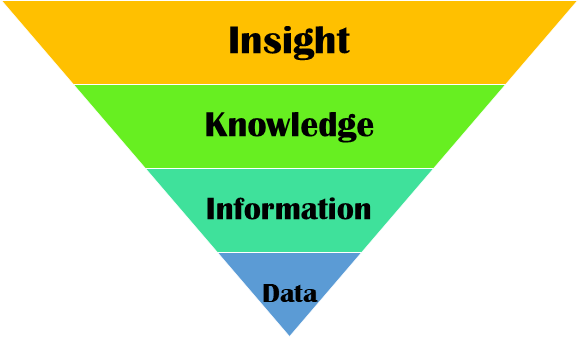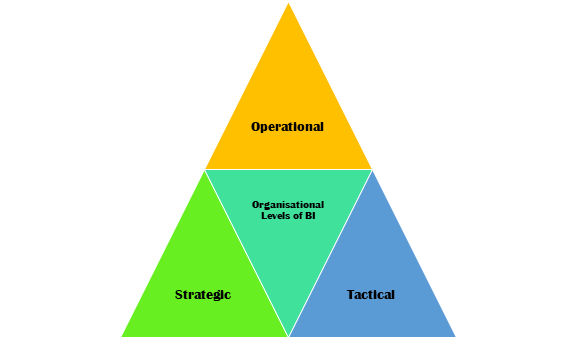If one is the master of one thing and understands one thing well, one has at the same time insight into and understanding of many things. — George Santayana
Let’s establish the context of where insights sit in the general scheme of business intelligence, the answer is fairly simple. We gather raw data, meld it into information, model it as knowledge and then present it, either as an insight or in a form that enables the Business Intelligence consumer to draw their own conclusions from the knowledge presented. Gathering insights is the rationale behind Business Intelligence. This is a process that is structured with insight at the top after data, information and knowledge.

Insights come in two main types, the prior status and the future status. The prior status is a lagging indicator which may be used as a KPI. A future status is much more of a call to action. Insights occur at three conceptual levels. Traditional Business Intelligence is Strategic, senior management may make Tactical use Business Intelligence, modern business intelligence brings insights to the day-to-day Operational business.

It’s worth noting that all insights have provenance, they come from somewhere. Data is generated by processes and modelled, based on assumptions, into information. Knowledge is created based on relationships and algorithms. An insight draws on the knowledge and may also rely on human judgement.
This brings us to consider that we know how insight can come about, but what do we do about it? Doing nothing is not a good option if the insight is that all is well, we should record that, like a good watchman. If the insight requires action we should also record this and the action that should be taken. Too often Business Intelligence reporting does not satisfy these objectives and instead falls into the Slough of Despond commonly called Passive Business Intelligence. We should not rely on the foibles of human nature to complete our actions, we should use Active Business Intelligence.
But you already knew that right? Anywise you wouldn’t have read this far. Modern BI web clients are mainly written as web pages and it is possible to add actions to these web pages. These actions can capture the context of insight and send it to the appropriate process. This is Active Business Intelligence, acting directly on those insights.